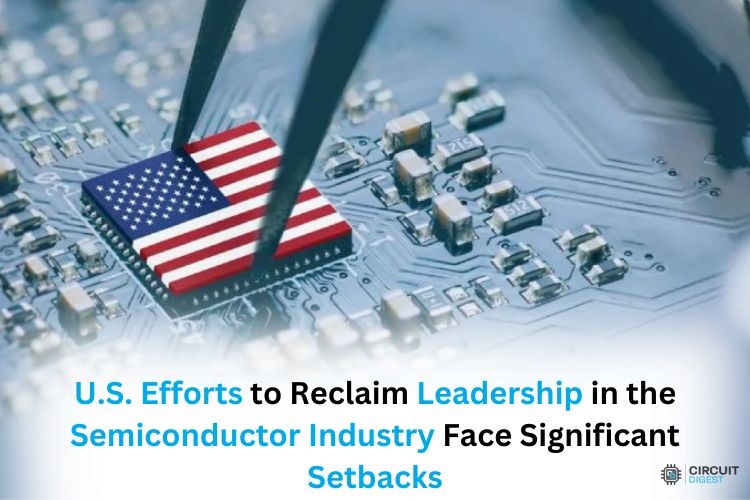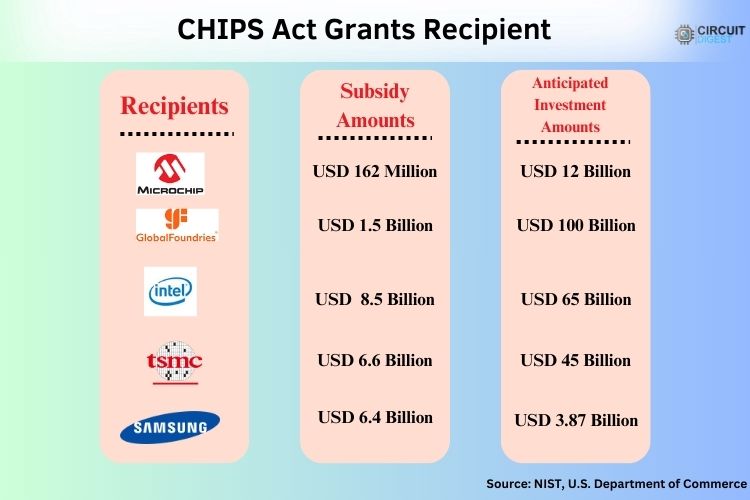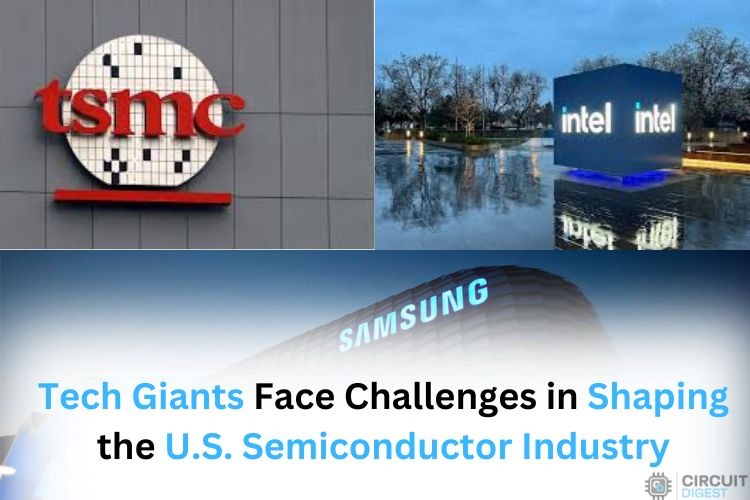
In May 2020, Industry leaders Huang Renxun, Su Zifeng, Tim Cook, Wei Zhejiang, Liu Deyin, and Morris Chang came together in Phoenix, Arizona, to commemorate the opening of TSMC's first plant in the United States. This was considered a crucial event. It was an important turning point in the revival of the US semiconductor manufacturing sector. The world's leading chip manufacturers, TSMC, Intel, and Samsung, were all on board thanks to government subsidies under the CHIPS and Science Act. However, even after four years, the grand vision has yet to materialize.
The United States invested USD 30 billion in the semiconductor sector to restore its industrial glory. However, the effort has encountered significant obstacles rather than a victorious resurgence. Many of the large-scale production projects by TSMC, Intel, and Samsung have been delayed or shelved due to serious difficulties. Approximately 40 percent of these major projects are still inactive. It is now unclear what will happen to the CHIPS Act, which was supposed to be the catalyst for this revival. Deteriorating market conditions intensify the uncertainty, and subsidy regulations are still unclear. As election season draws near, the act's future is in jeopardy and highly vulnerable to unexpected shifts in the political landscape.
The CHIPS Act: High Hopes, Harsh Realities
The CHIPS Act was hailed as a game-changer, promising to bring back America's dominance in semiconductor manufacturing. Leaders in process technology, including Intel, Samsung, and TSMC, received significant subsidies. However, they encountered similar obstacles. Not only did they fail to produce a single chip, but their plans to construct new factories also took longer than anticipated.
TSMC, for instance, has faced several setbacks. Their Arizona plant, originally set to begin mass production in 2024, is now projected to start in the first half of 2025. The opening of the second wafer facility, initially planned for 2026, has been rescheduled for 2028. There is still uncertainty surrounding the third factory, which was expected to utilize 2nm or more advanced process technologies.

TSMC's Setbacks: What Went Wrong?
The plan seemed simple: build factories, hire local talent, and boost production. But reality has a way of shaking things up. Several factors have contributed to TSMC's challenges in the United States. Firstly, work culture. The company has faced difficulty in hiring local American workers. The American workers find TSMC's working practices unpleasant and harsh. On the other hand, there have been reports of cultural miscommunication, where American workers may have mistreated their Taiwanese colleagues, further complicating the work environment.
These issues have sparked a debate about whether TSMC's U.S. expansion is sustainable in the long run. A significant portion of Taiwanese netizens has expressed concerns, with one even commenting, “Stop forcing TSMC to build factories overseas. The conditions are different. It’s like throwing money into the water or burning it on subsidies?”
Intel and Samsung: Navigating Their Own Set of Challenges
TSMC is not the only company facing challenges. Intel has also encountered delays. Their USD 20 billion Ohio project, which was originally expected to start chip production in 2025, has now been pushed back to 2027-2028. Intel's issues stem from a combination of market constraints and slow government investment in the United States. The root cause of Intel's challenges can be attributed to a combination of market limitations and sluggish government investment in the United States.
Samsung, another semiconductor giant, has faced similar challenges. They have secured a USD 6.4 billion grant from the US and will commence construction of their first wafer fab at the Taylor facility in Texas in 2022. This USD 17 billion project was originally planned to be completed by 2024, with a 4nm process production capability.

The Broader Impact: A Ripple Effect Across Industries
The semiconductor industry isn’t the only sector facing challenges in the U.S. Clean energy technology projects have also been slow to progress. The Chips and Science Act (CHIPS) and the Inflation Reduction Act (IRA), both introduced by U.S. President Joe Biden in August 2022, have not achieved the anticipated success in improving the semiconductor industry in the U.S. In the first year of implementing these measures, a total of 114 projects costing over USD 100 million were announced, with a combined investment totaling USD 227.9 billion.
For example, LG Energy Solutions’ USD 2.3 billion battery energy storage facility in Arizona and Albemarle’s USD 1.3 billion lithium refinery in South Carolina have been shelved. Even the battery component manufacturer Anovion’s $800 million factory in Georgia has faced delays.
In the semiconductor industry, other projects have also been put on hold. U.S. semiconductor manufacturer Pallidus had plans to move its headquarters from New York to South Carolina and open a production line there with a total investment of USD 443 million. The new plant was supposed to be operational by the third quarter of last year, but it has remained idle ever since. Integra Technologies, another U.S. semiconductor company, announced plans last year to invest USD 1.8 billion in building a semiconductor factory in Bel Aire, Kansas. However, uncertainty around government funding has stalled the project.
CHIPS Act Funding in Limbo: What’s Next for U.S. Semiconductor Projects?
As of July 30, 2024, the CHIPS Act Program Office has announced grants and loans totaling over USD 30 billion and over USD 25 billion respectively, according to a report by the Semiconductor Industry Association (SIA). These subsidies have been granted to 14 companies, with the majority going to the five major foundries: Intel, GlobalFoundries, TSMC, Samsung, and Micron. However, the funds have not been distributed yet, despite the announcements. The U.S. Department of Commerce aims to distribute all USD 39 billion in direct incentive grants from the CHIPS Act by the end of 2024.
The projects, which are expected to exceed USD 284 billion, will have different completion times, with some scheduled for completion by 2025. Other fabs may take anywhere between two to seven years to finish. The SIA suggests that while the CHIPS Act funding could influence the development of some fab sites, it is unlikely to have a significant impact in 2024. Nonetheless, it may lead to increased capital expenditures in 2025.
.jpg)
An Uncertain Political Landscape
In the United States, industries are facing an uncertain future. The political situation is particularly volatile, especially with the upcoming U.S. elections. During his campaign rallies, former President Donald Trump has repeatedly threatened to “repeal the IRA bill on the first day of taking office.” Should Trump return to power, the fate of the IRA and CHIPS Acts could be at risk.
Moreover, unclear subsidy regulations, a declining market environment, and reduced demand have compelled companies to reconsider their strategies. Even with subsidies, the challenges of constructing factories, hiring staff, and sustaining investment remain formidable. President Biden’s policies have sparked numerous inquiries. These policies are designed to generate jobs and economic benefits in the U.S. through industrial transformation.
Conclusion
The U.S. semiconductor industry, along with other tech sectors, is navigating a challenging landscape. Despite significant investments and ambitious plans, the road to success is blurred by delays, cultural clashes, and political uncertainties. The next few years will be crucial in determining whether the U.S. can overcome these hurdles and reclaim its position as a leader in semiconductor manufacturing. For now, the manufacturing environment remains in a state of flux, with no clear answers in sight. But one thing is certain: the journey will continue, with all its twists and turns.





